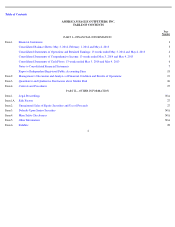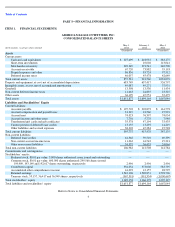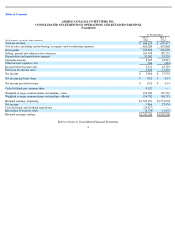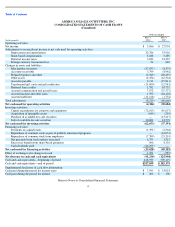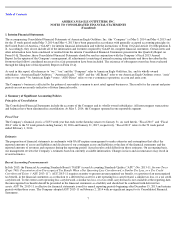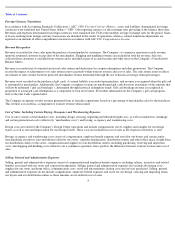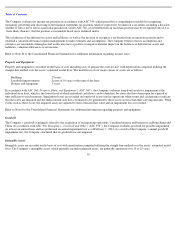American Eagle Outfitters 2013 Annual Report Download - page 11
Download and view the complete annual report
Please find page 11 of the 2013 American Eagle Outfitters annual report below. You can navigate through the pages in the report by either clicking on the pages listed below, or by using the keyword search tool below to find specific information within the annual report.
Table of Contents
The Company evaluates its income tax positions in accordance with ASC 740, which prescribes a comprehensive model for recognizing,
measuring, presenting and disclosing in the financial statements tax positions taken or expected to be taken on a tax return, including a decision
whether to file or not to file in a particular jurisdiction. Under ASC 740, a tax benefit from an uncertain position may be recognized only if it is
“more likely than not” that the position is sustainable based on its technical merits.
The calculation of the deferred tax assets and liabilities, as well as the decision to recognize a tax benefit from an uncertain position and to
establish a valuation allowance require management to make estimates and assumptions. The Company believes that its assumptions and
estimates are reasonable, although actual results may have a positive or negative material impact on the balances of deferred tax assets and
liabilities, valuation allowances or net income.
Refer to Note 10 to the Consolidated Financial Statements for additional information regarding income taxes.
Property and Equipment
Property and equipment is recorded on the basis of cost, including costs to prepare the asset for use, with depreciation computed utilizing the
straight-line method over the assets’ estimated useful lives. The useful lives of our major classes of assets are as follows:
In accordance with ASC 360, Property, Plant, and Equipment (“ASC 360”), the Company evaluates long-lived assets for impairment at the
individual store level, which is the lowest level at which individual cash flows can be identified, for stores that have been open for a period of
time sufficient to reach maturity. Impairment losses are recorded on long-lived assets used in operations when events and circumstances indicate
that the assets are impaired and the undiscounted cash flows estimated to be generated by those assets are less than their carrying amounts. When
events such as these occur, the impaired assets are adjusted to their estimated fair value and an impairment loss is recorded.
Refer to Note 6 to the Consolidated Financial Statements for additional information regarding property and equipment.
Goodwill
The Company’s goodwill is primarily related to the acquisition of its importing operations, Canadian business and businesses in Hong Kong and
China. In accordance with ASC 350, Intangibles – Goodwill and Other (“ASC 350”), the Company evaluates goodwill for possible impairment
on at least an annual basis and last performed an annual impairment test as of February 1, 2014. As a result of the Company’s annual goodwill
impairment test, the Company concluded that its goodwill was not impaired.
Intangible Assets
Intangible assets are recorded on the basis of cost with amortization computed utilizing the straight-line method over the assets’ estimated useful
lives. The Company’s intangible assets, which primarily include trademark assets, are generally amortized over 15 to 25 years.
10
Buildings
25 years
Leasehold improvements
Lesser of 10 years or the term of the lease
Fixtures and equipment
5 years



